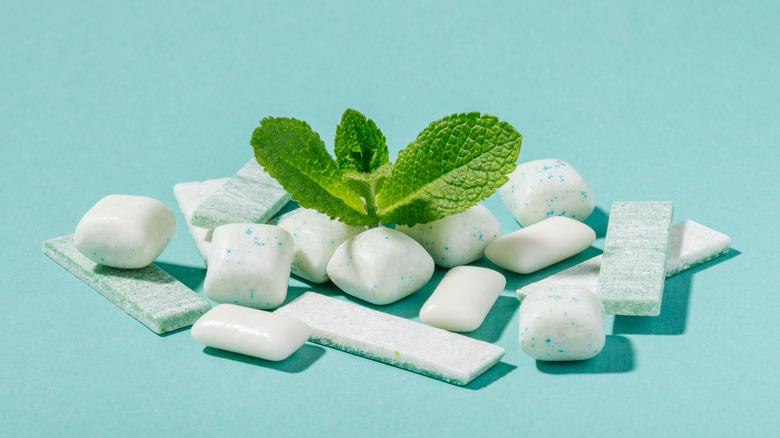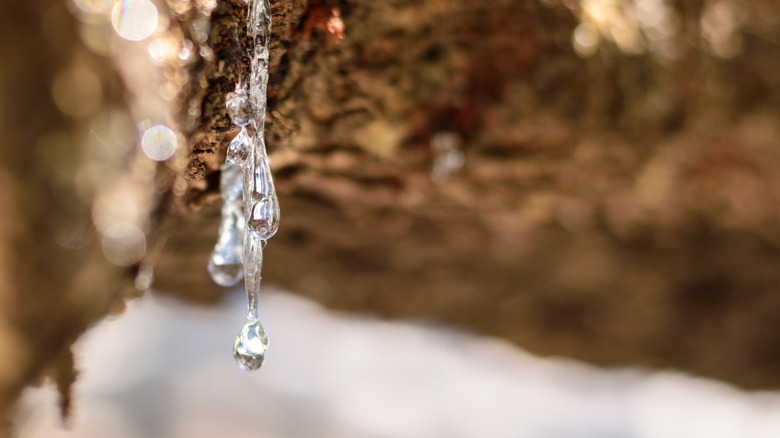What Is Gum Really Made Of?
We may receive a commission on purchases made from links.
We can freshen our breath with sticks of Juicy Fruit gum or mint-flavored squares, and blow pink bubbles with balls of bubblegum. Gum is not exactly a piece of food, and it's not something we ingest — so what exactly is it? Technically, gum falls into the confectionary category, and today, it is made from a gum base, sweetener, flavoring agents, and coloring. A synthetic gum base is most commonly used, which typically uses a food-grade rubber called polyisobutylene. Tree gum or sap was traditionally used as the base of gum, but this natural ingredient is more expensive and difficult to harvest, so large producers opt out of using it; some natural chewing gum producers still use a tree sap base.
Chewing gum is made by first melting down the base of rubbers, waxes, and polymers (which are yes, plastic) or a natural base of tree sap. A syrup, like glucose, is then added to make the gum chewable. Next comes the sweeteners, preservatives, and any added synthetic or natural flavors. Some gums are sugar-free and sweetened with stevia or aspartame, while others use regular sugar. Once all the ingredients are incorporated, it is shaped, cut, and packaged.
Due to the synthetic gum base, gum is not biodegradable, nor is it intended to be ingested. However, the myth that gum sits in your stomach for seven years is not true — it won't be digested, but it will move through your digestive tract and leave your body relatively intact.
The natural origins of gum
The earliest gums were completely natural and came from trees native to ancient civilizations. The oldest chewing gum is thought to be birch sap; an ancient chunk of birch bark sap with teeth marks was discovered in Finland and is thought to be between 5,500-6,000 years old.
In Greece, a natural gum was harvested from the mastic tree on the Southern Island of Chios, dating back 2,500 years to the time of Hippocrates. In the Mayan and Aztec empires, which stretched from Mexico to throughout Central America, the sap of chicozapote trees was harvested, cooked down, and chewed on. Native Americans chewed on hard sap nuggets from the spruce tree, and this would become the first commercial chewing gum in the United States.
If you're not a fan of the popular synthetic gums on the market, it's possible to chew gum like the ancient Mayans and Greeks. Today, in Mexico and parts of Central America there are still producers called chicleros, who harvest the white sap from the tree trunk, cook it down, and mold it into large bricks of natural gum. Called chicle (Spanish for gum), the natural gum is distributed to over 30 countries throughout the world. The teardrop-shaped sap drippings of the mastic tree are still collected and sold to chew on as gum. Natural gums are more difficult to find in the average supermarket, but they can be purchased online or at some natural food stores.

